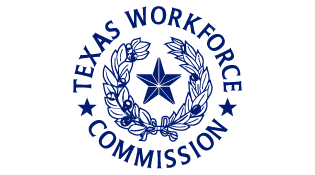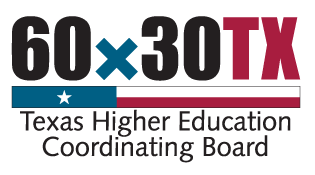Searching and applying for scholarships can take a lot of time for educators and students alike. And we get why – students are often both excited and overwhelmed by going to college and taking on the cost that comes with it. As an educator, it’s your job to help students navigate their remaining time in high school, finalize their postsecondary plans, and help minimize student debt. This blog will walk you through the basics of scholarships so you can be prepared to support your students through this exciting time.
Like students, scholarships come in all shapes and sizes, and there are more scholarships now than ever before! We'll go over all the things that educators need to know about scholarships, including links to additional articles, webinars, videos, and other resources. And don’t forget to refer to the ultimate source for all postsecondary planning information for professionals: the Texas OnCourse Academy.
What you’ll find on this page
In this article, we’ll give you a complete breakdown of scholarships from an educator perspective – from searching for scholarships to accepting awards. Click below to navigate to each section, or keep scrolling to read it all!
Click below to navigate to each section or keep scrolling to read it all!
- What is a scholarship?
- Types of scholarships
- Scholarship sources
- Questbridge Scholarship
- National Merit Scholarship
- College Board Opportunity Scholarship
- Microscholarships
- Components of a scholarship application
- What to expect after submitting an application
What is a scholarship?
A scholarship is a type of gift aid awarded to students for college. This means that unlike other types of financial aid, it’s free money that students don’t have to repay or work for! Scholarships are often given out by schools or institutions, or by private scholarship providers such as foundations, employers, or nonprofits.
Like grants, scholarship money is completely free. However, although grants and scholarships are similar, there are differences between these two types of awards.
Grants are typically awarded based on financial need, while scholarships can be awarded based on academic, athletic, or artistic ability. Scholarships can also be awarded for a number of reasons. They can range from demographic identity to some fun or wacky talent, like proving you can survive a zombie apocalypse or duct-taping your prom gear. Grants are often given to students by federal or state governments, while scholarships are found in all kinds of places.
Scholarships are a great way to promote higher education for students who may not otherwise be able to attend a college or institution. It’s important to help students find and win scholarship money to lessen their risk of student debt.
Types of scholarships
So, how does a student win a scholarship? In general, scholarships can be merit-based or need-based. A merit-based scholarship is earned by meeting certain criteria created by a school, organization, or other type of scholarship provider. The factors may be academic achievements, possessing a certain type of trait or skill, or a combination of both. Need-based scholarships are given based on financial need.
Scholarships may also be given based on demographic factors such as a student’s race or ethnicity, gender, age, or background.
Below, we mention some popular types of scholarships, but remember – there truly is a scholarship for every type of student. So don’t count any student out! Encourage your student to do scholarship research based on their hobbies, interests, or demographics. If they’re still having trouble with finding ideas for scholarships, check out this list of weird scholarships for more inspiration.

Academic scholarships
The most popular type of merit-based scholarship is an academic scholarship. These types of scholarships are reserved for all-star students who earn high grades, get good scores on tests like the SAT and ACT exams, or show some other type of academic aptitude. Some popular academic scholarships include the QuestBridge Scholarship, the National Merit Scholarship, and the College Board Opportunity Scholarship. But students with high academic scores should also contact their college of choice to inquire about scholarship opportunities and do their own search using search engines or other outreach.
Talent- or hobby-based scholarships
Other popular merit-based scholarships are scholarships given to students based on a talent, hobby, or skill. The most well-known scholarship of this type may be the athletic scholarship, which is awarded to students who excel at sports and is usually given directly from colleges. However, there are many other types of hobbies or skills that can earn students scholarship money! Students who make art, play an instrument, dance, sing, act, or participate in some other type of skill-based talent may also find that they qualify for scholarships! Students who don’t think they have convention qualifications may benefit from a fun or unusual skill that can earn them a chance to win a scholarship.
Activities
Similar to talent-based scholarships, students may be able to find a scholarship based on the kinds of activities they are involved within their school or community. Students who participate in volunteer work or military service, or show leadership in some other type of activity, may be awarded for their hard work!
Background or demographic scholarships
Some scholarships are awarded to particular types of people. For example, students may find scholarships for women, scholarships for first generation college students, and scholarships for moms and dads. Students may even find scholarships based on their race and ethnic identity – or family name! Have students search online or in their communities for scholarships of this type.
Find a full breakdown of each type of scholarship in the Scholarship Applications module in the Texas OnCourse Academy. Log in to the Academy here for resources, FAQ and full descriptions.
Scholarship sources
Students can apply for grants and scholarships through a number of different sources, including the US government, their college or institution, and private organizations. Each of these sources may have different applications and methods for offering aid, so ensure that students research each opportunity to maximize the scholarship earnings. Students can also apply for scholarships through the ApplyTexas scholarship section, so be sure they know about that!
Government aid
There are two types of government aid that students can use to find grants or scholarships: federal aid and state aid. Federal aid offered by the US Department of Education is the largest financial aid source in the nation.
While some of the aid offered by the federal government is in the form of loans that need to be repaid, students may also be offered need-based gift aid such as the Pell Grant or a Federal Supplemental Education Opportunity Grant. To receive federal aid, eligible students must complete the Free Application for Federal Student Aid (FAFSA), which opens in October and should be filled out every year.
State government often funds grants and scholarships for residents attending college in the state or for students who may not be eligible for federal aid. In Texas, students who don't qualify for federal aid through the FAFSA may be eligible to apply for state financial aid through the Texas Application for State Financial Aid (TASFA).
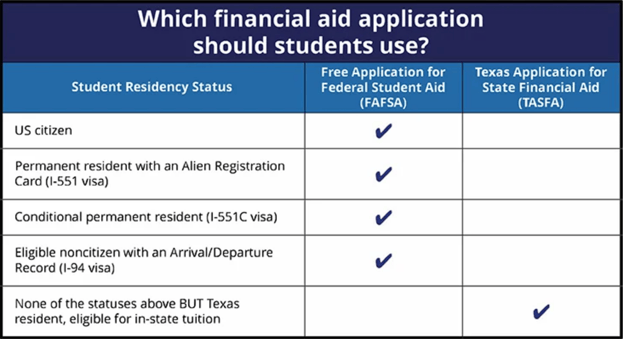
Institutional aid
Colleges and universities typically offer scholarships, grants, and work-study programs to their students. Institutional scholarships may be merit-based, need-based, or both! Be aware that colleges often have strict requirements for keeping a scholarship; these requirements may be maintaining a certain grade point average or continuing participation in school activities. Students should talk to the financial aid office at schools they are interested in to learn about available opportunities.
Private sources
There are many other organizations, foundations, or community entities that offer grants or scholarships. These types of scholarships can be harder to find, but they are often less competitive. Have students check out possible scholarship opportunities online or around their communities, including religious centers, their guardian’s employer, local businesses and civic centers, banks, or other local resources.
Find a list of scholarship sources and more information about searching for scholarships in the Texas OnCourse Academy in the Scholarship Application module.
Popular scholarships for students
The Questbridge Scholarship
The QuestBridge National College Match is a college scholarship program that helps exceptional students from low-income backgrounds attend some of the nation’s top schools. With roots dating back to 1987, QuestBridge has helped connect students to more than $2 billion in scholarship money!
To do so, QuestBridge partners with over 40 top US colleges to offer the National College Match Scholarship. Students who win the National College Match Scholarship are granted admission to one of QuestBridge’s college partners with a full four-year scholarship worth over $200,000. It includes room and board, books, supplies, and travel expenses. And it requires no family contribution or student loans.
All high school seniors who attend high school in the United States are eligible to apply, but QuestBridge says that successful applicants show high academic achievement and typically come from households earning less than $65,000 a year for a family of four. Undocumented students can apply, but only some partner colleges will consider non–US. citizens or permanent residents for the Match Scholarship.
Past scholarship winners have shown:
- Primarily A’s in most challenging courses
- Class rank in the top 5–10% of graduating class
- At least 1260 SAT score or 27 ACT score
- Demonstration of strong writing skills, determination, and good recommendation letters
None of these criteria are requirements, but QuestBridge says that they should give you an idea of the type of student who should apply for the scholarship.
Interested students should begin preparing and gathering materials during their junior year. The application closes in September, and in October, applicants rank up to their top 12 college partners for consideration. Applicants will be notified if they have been selected as finalists.
The good news is that even students who were not selected to be finalists have something to gain! Applicants who were not selected can still reapply to all partner schools under QuestBridge Regular Decision without any application fees.
The National Merit Scholarship/PSAT
The National Merit Scholarship is a popular and prestigious scholarship that high achieving students can compete for to earn money and acknowledgment. More than four million students take the qualifying exam each year, with 7,500 finalists selected.
To enter, students must take the preliminary SAT exam/National Merit Scholarship Qualifying Test (PSAT/NMSQT) – this is usually done junior year. Unlike the QuestBridge scholarship, financial need isn’t taken into consideration for this opportunity. Students who score high on the test and meet other requirements such as high academic performance and endorsement from their high school principal are eligible for the reward.
Around 16,000 students, representing the top 1% of test takers, will qualify as semifinalists. In September of their senior year, semifinalists will submit an application, academic record, a recommendation (typically from the school principal), and an essay.
Four types of scholarships are awarded:
- National Merit Scholarships provide $2,500 toward the student's freshman year of college.
- College-sponsored Merit Scholarships vary by sponsor, but they may be renewable for four years at the participating college. Awards range from $500 to $2,000 per year.
- Corporate-sponsored Merit Scholarships and corporate-sponsored Special Scholarships also vary by sponsor. Students may receive a one-time payment ranging from $2,500 to $5,000 or renewable rewards ranging from $1,000 to $10,000 per year.
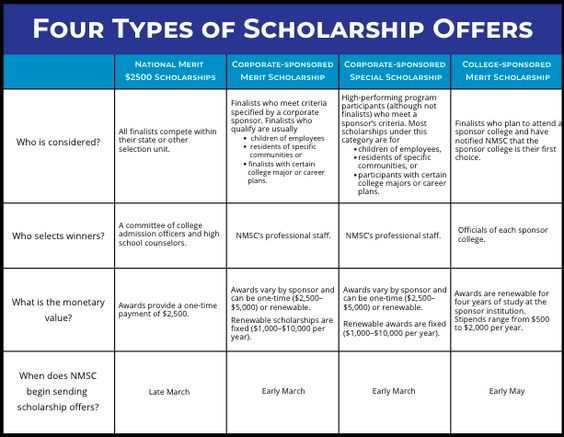
College Board Opportunity Scholarship
College-bound students with average grades or tests scores should take a look at the College Board Opportunity Scholarship! The program guides students through the college planning and application process and awards some lucky students with opportunities to earn money along the way.
The program includes a chance to win six microscholarships worth $500 each, which go to thousands of students each year. Students who complete the whole program are eligible for the $40,000 Complete Your Journey Scholarship.
The Opportunity Scholarship is open to all US college students, regardless of citizen status, test scores, GPA, or family income. Students just need to indicate that they are working toward attending college by participating in the program and completing college-planning steps! And students whose households bring in less than $60,000 a year get an extra entry for each step they complete.
Microscholarships
Any student can start earning money as early as ninth grade by applying for microscholarships! Never heard of a microscholarship? Microscholarships are money that high school students can earn for college for individual achievements. They’re awarded by colleges and universities who partner with RaiseMe. Every participating college or university creates their own system and criteria for their microscholarships.
Once students create a profile on RaiseMe, they can find information about colleges, including cost of tuition, acceptance rate, and more. Colleges then allow students to submit accomplishments from a predetermined list and earn small amounts of money, which can contribute to a student’s cost of attendance if they choose to attend that school.
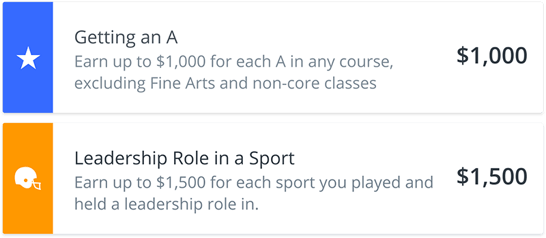
Find more information about popular scholarships and resources for students when you log in to the Texas OnCourse Academy and start the Scholarship Applications module.
Scholarship Applications
When students are ready to begin filling out applications, there are a few common components one should know about. Talk to you students early about what they can expect to ensure that they submit a strong scholarship application. You should also talk to them about what to avoid when applying for scholarships.
Personal information
Students should be prepared to answer questions about themselves, including where they live, what school they want to go to, what they want to study, and how they can be contacted.
Financial information
If a student is applying to a need-based scholarship, they will need to report information regarding their financial need. Many scholarship providers will ask students to self-report this information as well as submit the FAFSA.
Academic information
Scholarship applications also commonly ask students about their high school, grades, expected graduation date, cumulative GPA, class rank, and transcript.
Adviser/educator contact information
Oftentimes, scholarship providers may ask students to provide contact information for a student’s counselor or other educator. That way they can contact you to learn more about the student or to get a recommendation!
Test scores
Students may need to submit standardized test scores from the ACT or SAT. Students who have taken multiple tests should only submit their best scores.
Responsibilities
Many scholarships want to know about responsibilities, commitments, and leadership roles that students have during high school. This can include school activities, volunteer work, employment, or work around the home.
Home and household
Lastly, scholarships applications could require information about your student’s life at home. This can include a parent or guardian’s education level, employment status, household size, etc.
To find more information about what students should expect to find on a scholarship application, head to the Scholarship Application module in the Texas OnCourse Academy.
What to expect after submitting a scholarship application
Whew! Applications are in, and it’s time for students to celebrate their hard work! After students submit a scholarship application, it is received and reviewed by a scholarship committee. Sometimes, students who meet the committee's criteria will be asked to go in for an interview. In most cases, finalists will be announced shortly after the application is due.
Finally, students who are selected will be informed of their winnings and will need to accept or decline their award. They will also need to give the scholarship provider the contact information for the financial aid office at their selected school.
Winning a scholarship is always something to celebrate, but it’s important to be aware that accepting a scholarship can affect a student’s overall financial aid package. When students are overawarded, or receive financial aid that exceeds the cost of attendance, federal regulations require that schools reduce their financial aid package. Make sure that students report outside scholarships to their college’s financial aid office, or they may be required to pay back excess money!
To learn more about scholarship applications (including how to read award letters and what students should expect on each application) and to download tons of free resources, log in to the Texas OnCourse Academy and begin the scholarship applications module. If you are a Texas counselor, you can qualify for up to $480 in 2020–21 when you complete badges in the Academy.





